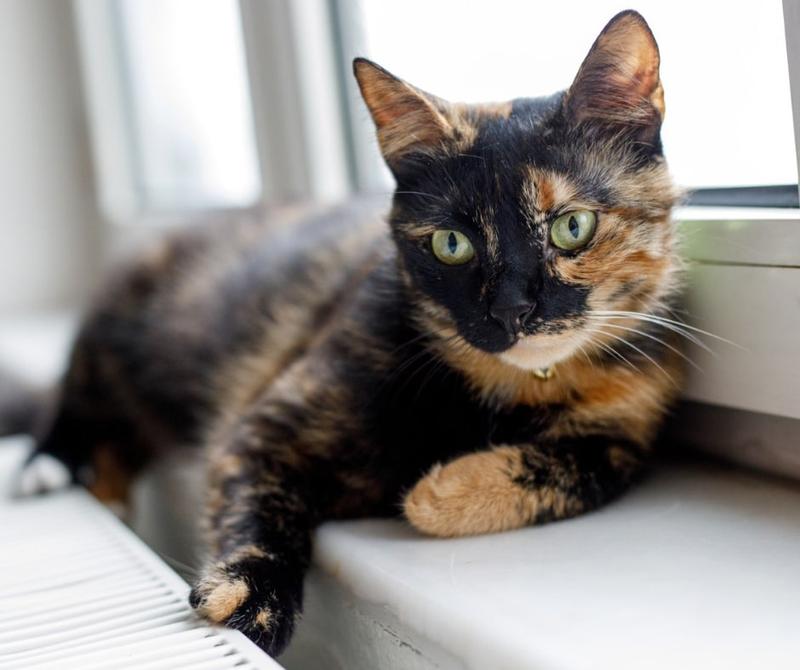All About Tortoiseshell cats
Tortoiseshell cats, fondly referred to as “torties,” are a captivating blend of fiery spirit and loving companion. Their unique mosaic of colors and distinct personality traits make them a favorite among cat lovers worldwide. In this comprehensive guide, we will delve into the enigmatic world of tortoiseshell cats, exploring their history, appearance, behavior, health, and care needs.
Tortoiseshell Cat History
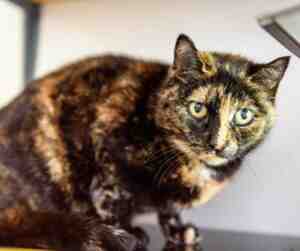
The history of the tortoiseshell cat is as colorful as its coat. Historically, torties have been celebrated in various cultures around the world. In Celtic folklore, they were considered good luck charms, while in Japanese folklore, they were believed to ward off evil spirits. Today, tortoiseshell cats are cherished for their unique coloring and vibrant personalities.
Appearance of Tortoiseshell Cats
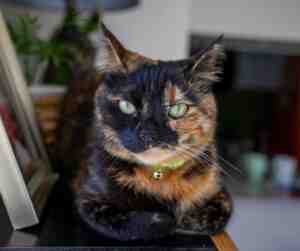
A tortoiseshell cat’s coat is a striking mixture of black and red or black and orange. The distribution of these colors varies widely, with some torties having more black and others having more red or orange. The two color patterns are referred to as ‘brindle,’ where the colors are intermingled, and ‘patched,’ where large sections of each color are visible. Some tortoiseshell cats even have patches of white, creating a tri-colored coat known as a “calico” or “tortie with white.”
Tortie Cat Temperament and Behavior
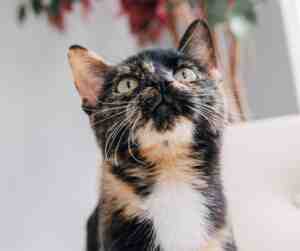
Tortoiseshell cats are known for their “tortitude,” a term coined by cat enthusiasts to describe the breed’s lively and strong-willed nature. They are known for their independence, but also for their affectionate and loving nature. While every tortie is unique, many owners report that their tortoiseshell cats are talkative and active.
Care, Nutrition, and Feeding of Tortoiseshell Cats
Torties, like all cats, require a balanced diet to maintain their health. A mixture of wet and dry food is often recommended, with a preference for high-quality brands that prioritize protein. Regular feeding times should be established, and treats should be given sparingly to avoid obesity.
Tortoiseshell Cat Grooming, Exercise, and Enrichment
Grooming a tortoiseshell cat is usually straightforward due to their short hair, requiring regular brushing to keep their coat healthy. Exercise and enrichment are also crucial, as tortoiseshell cats are known to be active and playful. Toys, scratching posts, and regular playtime will help keep your tortie happy and healthy.
Routine Veterinary Care and Health Concerns in tortie cats
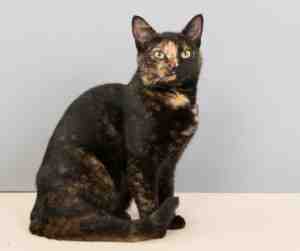
Regular vet visits are essential for tortoiseshell cats to monitor their health and catch any potential issues early. Common health concerns include obesity, dental issues, and urinary tract problems. However, torties are generally healthy and can live up to 15 years or longer with proper care.
Is a Tortoiseshell cat the right fit for you?
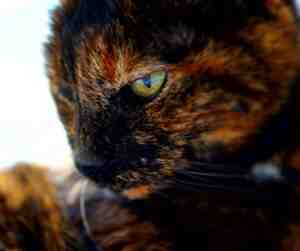
Tortoiseshell cats are suitable for families, singles, and seniors due to their adaptable nature. They get along well with children and other pets, although their independent nature means they also do well on their own.
Additional Tortie Cat Resources
For more information about tortoiseshell cats, consider these reliable online resources:
1. The Cat Fanciers’ Association (www.cfa.org)
2. The International Cat Association (www.tica.org)
3. The American Society for the Prevention of Cruelty to Animals (www.aspca.org)
4. PetMD (www.petmd.com)
5. The Humane Society of the United States (www.humanesociety.org)
In conclusion, tortoiseshell cats are a vibrant and unique breed with a rich history and captivating personality. With their striking appearance and endearing “tortitude,” they are sure to bring color and joy into any home. Whether you’re considering adopting a tortie or are already a proud tortie parent, understanding their unique needs and characteristics will help you provide the best possible care for these enchanting feline companions.
Thanks for your interest in our Tortoiseshell cat information guide. Be sure to check out our other articles and fun resources about Tortoiseshell cats right here on Cats and Kittens Central.

